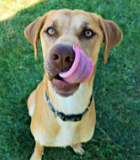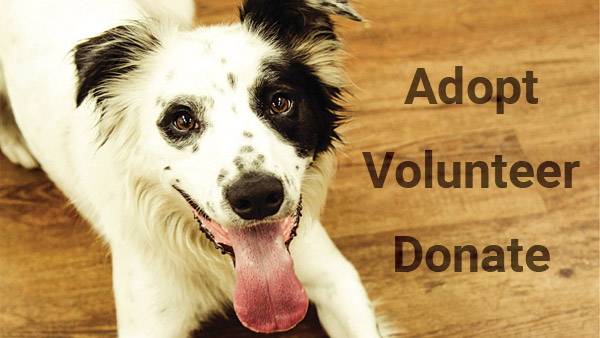Crate Training
- This topic has 0 replies, 1 voice, and was last updated 17 years, 7 months ago by
Mackenzie’s Admin.
-
AuthorPosts
-
October 4, 2006 at 11:20 pm #207
Mackenzie’s Admin
MemberWhy would I need to crate train my dog?
A dog who is trained to be content in a crate can be kept safe when traveling in a car, visiting someone else’s home, or being transported in an airplane. Some dogs really take to the crate, preferring to sleep in it or take refuge there when things get too hectic. Other dogs are never happy in the crate, but will tolerate it when necessary. Still other dogs panic when closed in a crate.
WHEN TO USE A CRATE
The use of a crate is especially helpful when introducing a new puppy or dog to the household. The crate can be used to facilitate house training, and to prevent the dog or puppy from engaging in destructive or inappropriate behavior. Puppies need to be taught to inhibit certain behaviors while in the home, such as digging at the furniture and rugs, chewing table legs and cushions, and stealing from the garbage cans or counters. This teaching is only possible when you can observe and monitor the dog’s behavior. Crating can be a lifesaver when this is impossible—when you leave the dog home alone, for example.
WHAT NOT TO DO
Crates can be easily misused:
– The crate should NOT be used to contain a dog simply because the dog is a nuisance and requires attention. A puppy or young dog can be annoying and exhausting, but it is unfair and negligent to lock the animal up rather than provide the training he needs.
– A dog should never be left in a crate for extended periods of time. An 8- to 16-week-old puppy should not crated for longer than an hour at a time, except for during the night. A four- to six-month-old puppy shouldn’t be crated for longer than a two- to three-hour period.
– An adult dog can be crated for as long as eight hours, but it is unreasonable to expect a dog to be content in a crate if he hasn’t received adequate exercise beforehand. A dog should only be crated during an eight-hour workday if he has been given at least 30-60 minutes of exercise beforehand. This is even more of a concern if the dog is crated at night as well —in which case he should receive 60-90 minutes of exercise outside, in the morning, before being placed back in the crate.
Should crating ever be used as a means of punishing the dog? If this is the only way the crate is used, the dog may come to dislike the crate. Some dogs will view the crate as a safe refuge, seeking it out to escape further punishment. It is acceptable to use the crate sparingly as a time-out place, but the dog should have many additional pleasant experiences with the crate, to counteract any possible negative associations.
A dog who is prone to guarding his belongings may also guard the area around his crate. Always be cautious when walking by an open crate or when removing such a dog from his crate. Do not reach in for the dog—either entice him out or lift the crate up from the back to “spill” the dog out. Some dogs appear to feel vulnerable and “trapped” in a crate, and may react with aggression when approached by unfamiliar people or dogs while inside.
HOW TO TEACH YOUR DOG TO ENJOY HIS CRATE
The instructions that follow are designed to teach a dog to enjoy being in a crate. The speed with which you progress depends upon the dog and whether he already dislikes the crate. If your dog has a history with the crate and is now reluctant to go in, get a different type of crate and work through the steps very slowly. There are wire crates, plastic airline crates, and mesh crates. The mesh crate is the most portable but is inappropriate for dogs who are big on chewing. The mesh and airline crates provide the most privacy for the dog. Some dogs like to have a blanket or towel draped over the wire crate to give a more “denlike” feel. Truly crate-phobic dogs may need preliminary training with crate-like structures. For instance, you might wish to teach the dog to walk under a suspended tarp, step between two upright boards, or lie down in the bottom half of an airline crate (top removed) before ever introducing him to a crate. Difficult dogs also benefit from training to sit, down, stay, and to step forward and back, as this gives you more precision in instructing the dog on exactly what behavior you’d like him to perform.
The following instructions incorporate the use of a clicker to precisely indicate the behavior you are reinforcing. You can also use a verbal sound marker (such as a clearly enunciated “yes”) whenever you see the indication to click. You may wish to begin using an airline crate with the door removed, or simply leave it ajar; flip the door of a mesh crate up over the roof. And remember, always progress through the steps at a pace that is appropriate for your dog. Repetition is the key to success, but you don’t want to bore the dog by staying at one step for too long.
1. Sit down in front of the crate with your dog. Have a supply of whatever treats he really likes. Show him a treat and toss it just inside the mouth of the crate. Allow the dog to reach in and take the treat. Repeat several times, sometimes requiring that he step a little further inside the crate. Always permit him to step back out at will.2. Show the dog a treat and move as though you are tossing it inside the crate. When the dog looks in the crate say “Yes!” and toss the treat inside. After a few repetitions, wait for the dog to actually take a step toward the crate before saying “Yes!”and tossing the treat inside. Once the dog is taking a step toward the crate, you are well on your way. With each repetition, always allow the dog to come back out of the crate. If he prefers to stay inside (presumably he’s figured out that he gets treats in there), give him a second treat for coming back out.
3. Dog takes two steps toward the crate, say “Yes!” and toss a treat into the mouth of the crate.
4. Dog moves to the crate and sticks his head inside the mouth, say “Yes!” and toss a treat into the crate.
5. Dog moves to the crate and places one front foot into the crate, say “Yes!” and toss a treat into the crate.
6. Dog moves to the crate and places one front foot, then the other, into the crate, say “Yes!” and toss a treat into
the crate.7. Dog moves to the crate, places both front feet in the crate, then takes another step deeper into the crate, say “Yes!” and toss a treat into the crate.
8. Dog moves to the crate, steps into the crate, and places one rear foot into the crate, say “Yes!” and toss a treat into the crate.
9. Dog moves to the crate, steps inside the crate, and places rear feet in the crate, say “Yes!” and toss a treat into the crate. At this point, the dog may back out of the crate or may turn around and walk forward out of the crate. Give a second treat when the dog exits the crate. Turning in the crate is preferred to exiting, as it sets you up nicely for subsequent steps. If the dog is inclined to back out, try reaching in with a treat in your hand, and luring the dog around. If the dog is nervous when you reach in, try a wider crate. He may feel more comfortable turning in a wider space or he may be more comfortable with you luring him around. Once turning is well established, wean off reaching in and luring him.
10. Dog moves to crate, steps inside, turns around, say “Yes!” and quickly reach inside to hand the treat.
11. Introduce a verbal cue to tell the dog to go inside the crate, Kennel up. Say this just prior to your dog moving toward the crate. If the dog starts to move to the crate before you tell him, that’s fine.
12. Cue the dog to get in the crate, dog moves to crate, steps inside, turns around, and takes a step toward the exit, say “Yes!” and reach inside to hand the treat. You should skip this step if the crate is so small that the dog can only take one step before exiting the crate.
13. Cue the dog to get in the crate, dog moves to crate, steps inside, turns around, cue the dog to sit or lie down—whichever he is most likely to do. When he does, say “Yes!” and quickly reach inside to offer the treat. If you need to, cue the dog to sit or lie down, and then reach inside to lure the dog into position.
14. Cue the dog to get in the crate, dog moves to crate, steps inside, turns around, cue the dog to sit or lie down: when he does, cue him to stay, wait 1-2 seconds, say “Yes!” and quickly reach inside to offer the treat. Say “Okay” and move back out of the crate so the dog can exit.
15. The dog should begin to automatically sit or lie down when he goes into the crate, without you having to cue him. If, at any time, the dog exits the crate before completing the full sequence of turning and sitting or lying down or staying, say “Too bad!” and withhold the treat. Start again. If he fails more than twice in a row, do something to help him succeed—maybe reach in with a treat to lure him to step farther inside or to adopt the sit or lie down position. Rely on this only once or twice; after that, he should be expected to perform the sequence himself. If he still fails, quit the session (maybe the dog is tired of the training) or revert to an earlier step and get an easier behavior well established before progressing again.
16. When the dog can go inside the crate, sit or lie down and stay for 10-20 seconds, begin closing the door. With a wire or airline crate, touch the door, say “Yes!” and quickly reach inside to offer the treat. Say “Okay” and move back out of the crate so the dog can exit. With a mesh crate, lift the door slightly off the roof, then replace, say “Yes!” and quickly reach inside to offer the treat. Say “Okay” and move back out of the crate so the dog can exit. Dogs with a history of disliking a crate will need a long time at this step to become comfortable with the crate door closing.
17. Gradually move the door toward the closed position until it is completely closed. Build the dog up to the point that he can remain in position inside the crate, with it closed for 20-30 seconds, before actually latching the door. Dogs with a history of disliking a crate will need a long time at this step to become comfortable with the crate door closing.
18. Continue to increase the time the dog is inside the crate, with the door latched. If the dog stands up or scratches at the door, say “Uh uh” and cue the dog to lie down again. If he does not lie down, reach in and lure him back into position, tell him to stay, close the door again momentarily, then say “Yes!” and quickly reach inside to offer the treat. Say “Okay” and open the door fully so the dog can exit.
19. Once the dog is able to lie down in the crate for one to two hours, always give him something nice to eat or chew to pass the time, such as a stuffed Kong, Goodie Ship, Dentabone, or chew bone. Skip this step if the dog is inclined to guard these items because it is imperative that you can remove them each time you allow the dog to exit the crate.
20. As the dog tolerates longer periods of time in the crate, vary your position so you are not always sitting right by the crate. Sit farther away, stand up, move about the room, etc. Make sure the dog is comfortable with you moving about the room before you ever attempt to leave the room or the house. Some dogs may never be able to tolerate staying in the crate while you engage in an activity they consider fun, such as sweeping the floor, playing with your child, visiting with guests, or training another pet. If you must crate the dog at these times, it is better to move the crate to a more isolated location. Alternatively, you may have to put up with the dog barking and scratching to be released. Any time the dog is whining, barking, or scratching to be released from the crate, always cue the dog to sit or lie down before opening the door. The dog will learn that sitting or lying down is the best way to get you to open the door. Make sure you don’t inadvertently teach the dog to whine, bark, or scratch to be released. Just make sure that most of the time you release the dog from the crate before he engages in these behaviors. If you find that he is always demanding to be released, you need to go back to the beginning steps and build up his comfort level again.
• |
[/b] -
AuthorPosts
- You must be logged in to reply to this topic.
















































